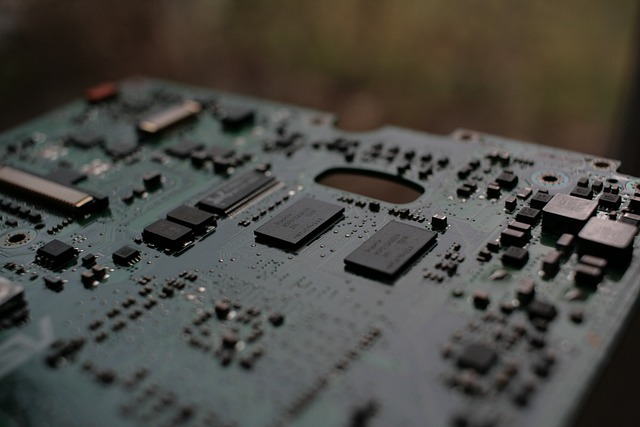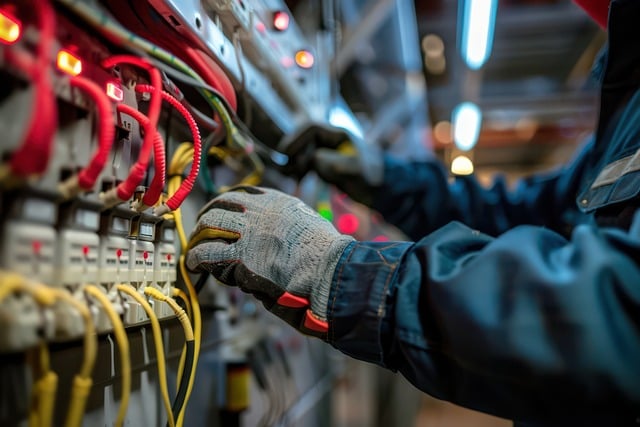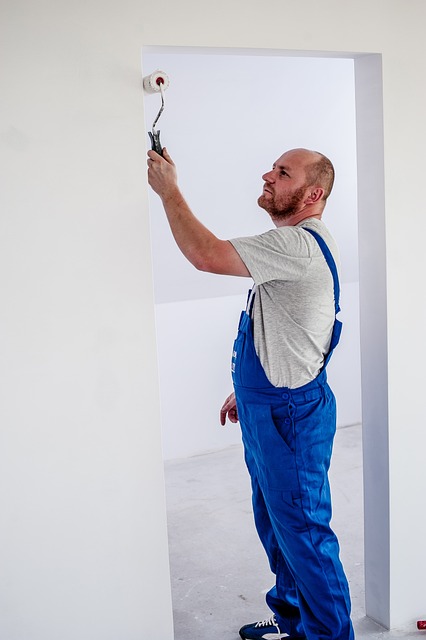To maximize HVAC efficiency and save on energy bills, proper insulation around your HVAC units is crucial. The right type and density of insulation—such as spray foam or fiberglass—should be chosen based on local climate and HVAC model, and installed correctly to prevent heat transfer and maintain interior comfort. Regular HVAC maintenance and timely repairs are essential for maintaining system performance alongside optimal insulation. Insufficient or improperly installed insulation can strain your HVAC system, leading to increased wear, higher energy consumption, and the need for more frequent repairs. Ensuring your HVAC units are well-insulated not only extends their lifespan but also contributes to a more sustainable and cost-effective living environment year-round. Remember, effective insulation is key to reducing reliance on your HVAC system and minimizing the costs associated with HVAC repair and maintenance.
Insulating HVAC units is a cost-effective and energy-efficient measure that can significantly enhance system performance and longevity. This article delves into the transformative impact of proper insulation on HVAC systems, offering insights on optimizing your unit’s efficiency. We explore the various types of insulation, their suitability for different climates, and the potential for reduced repair costs. Homeowners will find practical guidance on assessing their units, selecting materials, and executing a step-by-step installation process to shield against extreme temperatures. By understanding the financial and environmental advantages, as well as the maintenance best practices, readers can make informed decisions between DIY solutions and professional services for insulating HVAC units. Real-world case studies highlight the tangible benefits, while addressing common questions ensures clarity on the topic. This comprehensive guide aims to empower you with the knowledge to protect your HVAC system from the elements, minimize energy consumption, and potentially extend its lifespan, all while keeping repair costs at bay.
- Enhancing HVAC System Efficiency with Effective Insulation Installation
- Understanding Insulation Types and Their Impact on HVAC Units
- The Role of Proper Insulation in Reducing HVAC Repair Costs
- Assessing Your HVAC Unit: When to Replace or Add Insulation
- Step-by-Step Guide to Installing Insulation Around HVAC Units
Enhancing HVAC System Efficiency with Effective Insulation Installation

Improving the efficiency of a Heating, Ventilation, and Air Conditioning (HVAC) system can significantly reduce energy consumption and costs for homeowners and businesses alike. A critical component in this endeavor is the installation of effective insulation around units. Proper insulation acts as a barrier to temperature transfer, keeping the interior environment comfortable and reducing the strain on HVAC systems. When units are well-insulated, they operate more efficiently, as less energy is lost to the surrounding area. This not only leads to lower utility bills but also extends the lifespan of the HVAC system by minimizing wear and tear due to overworking.
Investing in high-quality insulation installation is a strategic move for maintaining system efficiency throughout the year, especially in extreme climates. It is crucial to consider the type and thickness of insulation material suitable for your specific region and the particular HVAC system you have. Insulation materials such as spray foam, fiberglass, or cellulose can be effective, but their performance depends on proper installation techniques to ensure there are no gaps or compromised areas where heat transfer could occur. Regular maintenance and HVAC repair services should also be scheduled to address any issues that may arise with the system, ensuring it works in tandem with the insulation for optimal performance.
Understanding Insulation Types and Their Impact on HVAC Units

Insulation plays a pivotal role in optimizing the efficiency of HVAC units, which are integral to maintaining comfortable indoor temperatures. Selecting the appropriate type of insulation is crucial for enhancing system performance and reducing energy consumption. There are various insulation materials available, each with its unique properties and applications. Fiberglass insulation, for instance, is a cost-effective option that offers robust thermal resistance, while spray foam insulation provides a more airtight seal, effectively preventing conditioned air from escaping and outside air from infiltrating. The choice between these options should be informed by the specific needs of the HVAC system and the structure it serves. For example, homes with large attics may benefit from the expansive coverage of spray foam, whereas fiberglass might be more suitable for spaces with fewer nooks and crannies. In any case, proper insulation reduces the strain on HVAC systems during extreme weather conditions, leading to less frequent and less costly HVAC repair interventions. This not only extends the lifespan of the HVAC system but also contributes to a more sustainable and energy-efficient environment within the home. Homeowners looking to improve their HVAC efficiency should consider a professional assessment to determine the best insulation solution for their unique situation, ensuring that their systems operate at peak performance all year round.
The Role of Proper Insulation in Reducing HVAC Repair Costs

Incorporating proper insulation around HVAC units is a critical step in enhancing overall system efficiency and reducing repair costs associated with heating, ventilation, and air conditioning systems. Effective insulation acts as a barrier against extreme temperatures, minimizing the strain on HVAC equipment. By maintaining more consistent indoor temperatures, the HVAC system operates closer to its optimal performance range, which not only extends its lifespan but also decreases the likelihood of malfunctions and the frequency of necessary repairs. This temperature moderation also ensures that when the system is in use, it does not have to work as hard to achieve desired comfort levels, leading to less wear and tear. Consequently, this can significantly extend the time between service calls and reduce the total cost of ownership for HVAC systems over their lifetimes. Homeowners who invest in proper insulation can enjoy a more efficient system with fewer repair issues, ultimately saving money and improving energy efficiency.
Assessing Your HVAC Unit: When to Replace or Add Insulation

When temperatures fluctuate outside, your HVAC system works in overdrive to maintain comfortable indoor conditions. To optimize its performance and energy efficiency, assessing your current insulation levels is crucial. If you notice that your energy bills are higher than usual or drafts are present despite sealed windows, it may be time to consider adding more insulation. Proper insulation acts as a barrier against the outside elements, keeping the heated or cooled air inside where it’s supposed to be. During an HVAC repair or maintenance check, a technician can evaluate your system’s efficiency and inspect existing insulation to determine if additional material would enhance performance. Insufficient insulation can cause your HVAC unit to work harder, leading to potential wear and tear, and shortening its lifespan. By ensuring that your home is well-insulated, you can significantly reduce the strain on your HVAC system, thereby extending its operational life and reducing energy costs. Regularly scheduled maintenance, including insulation checks, can prevent minor issues from escalating into costly repairs or replacements, thus safeguarding both your comfort and your wallet.
Step-by-Step Guide to Installing Insulation Around HVAC Units

Prior to installing insulation around HVAC units, it’s crucial to assess the current condition of your system to determine the best type and amount of insulation needed. This evaluation will help prevent issues in the future such as condensation buildup or frost formation that could hinder the unit’s performance. Begin by powering down and securing the HVAC unit, ensuring safety throughout the process. Next, measure the unit to determine the size and shape of the insulation needed; custom fits can enhance efficiency significantly. Choose a high-quality foam insulation or reflective barrier material that’s designed for outdoor applications. Carefully cut the insulation to fit snugly around the unit, leaving no gaps where air could enter or escape. Fasten the insulation in place using weather-resistant adhesive or clips, being mindful not to cover any ventilation slots necessary for proper HVAC operation. Once installed, check for any leaks or breaches that could compromise the insulation’s effectiveness. Regular maintenance and HVAC repair services should be scheduled to ensure the longevity and optimal performance of your insulated unit.
Ensuring that your HVAC unit is properly insulated can lead to substantial energy savings and a more comfortable environment, especially in extreme weather conditions. The reflective barrier material, often used in conjunction with foam insulation, serves as an additional layer to deflect heat away from the unit during the summer and keep it retained during the winter. This dual approach not only protects the unit but also contributes to a reduction in energy consumption, which is essential for both environmental sustainability and cost-effectiveness. Regularly inspecting and maintaining the insulation will help maintain its effectiveness over time, reducing the need for frequent HVAC repairs and ensuring that your system operates at peak efficiency.
In conclusion, investing in quality insulation for HVAC units is a strategic move towards enhancing system efficiency and reducing long-term HVAC repair costs. By selecting the right type of insulation and ensuring its secure installation, homeowners can significantly improve their heating and cooling systems’ performance. The comprehensive guide provided offers clear steps to effectively insulate HVAC units, thereby safeguarding against energy loss and optimizing system functionality. Homeowners are encouraged to regularly assess their HVAC units to determine if additional insulation is necessary, thus maintaining optimal efficiency and minimizing the need for costly repairs. With these practices, homeowners can ensure their HVAC systems operate at peak performance while keeping energy expenses low.
